Wednesday Dec 17, 2025
Wednesday Dec 17, 2025
Thursday, 27 September 2018 00:40 - - {{hitsCtrl.values.hits}}
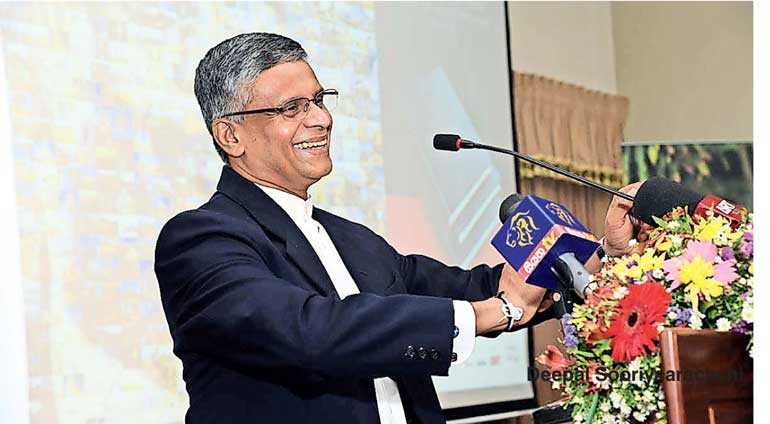
Once again, Deepal Sooriyaarachchi invited corporate Colombo to an unusual book launch experience. This time it was when he launched his latest book ‘Living Together’on 12 September with the PIMA at the PIM Auditorium which was filled to capacity.
The book captured two decades of his experiences in taking part in an experiment where he had to live with persons from other faiths in different parts of the world. The event was unique for it offered the audiences what it means to live together with different faiths.
As the people took seats in the hall there was instrumental music and the repeat chant of Om Mani Padme Hum.
Twenty minutes before a TV interview with Deepal on ART TV was played, thus giving a broader context of the book to the audience. End of it the lights went off.The famous Hindu devotional song (bhajan) Raghupathi Raghawa Raja Ram was played with the visuals and wordings on the screen. That really set the tone for the evening.
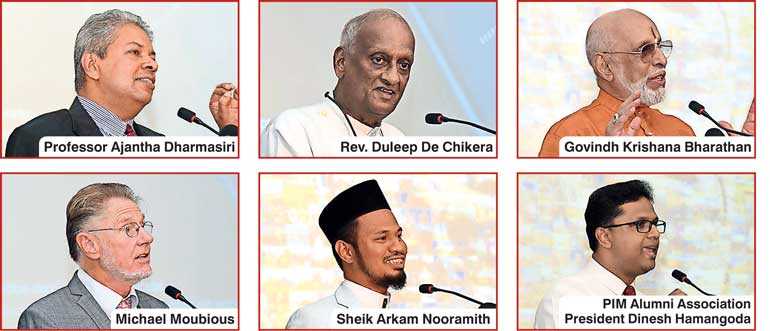
After the anthem of PIM the MC Dimuthu Ruwan Piyasena posed the question whether “humans are going through spiritual experience or spiritual beings going through human experience?” quoting the French philosopher, Pierre Teilhard de Chardin whose thinking that influenced the founder of this inter religious living dialogue.
In the local context ‘Living Together’ is still not considered very acceptable hence the title of the book gave a lot of pun on the word. In between the speakers there were video messages from such other participants such as Ven. Olande Ananda, the Buddhist partner and Islamic and Christian singing to add a new dimension to the whole experience.
Representing the most senior members of the Dialogue group Ven. Olande Anada extended his greetings via a video message. Apparently it was an accidental meeting with him that led Deepal to become a member of this experiment group. Ven Ananda explained how the original dialogue groups consisting of all major religions lived together for first three months and then to two months discussing and trying to experience each other’s faith.
The welcome speech was delivered by PIM Alumni Association President Dinesh Hamangoda.
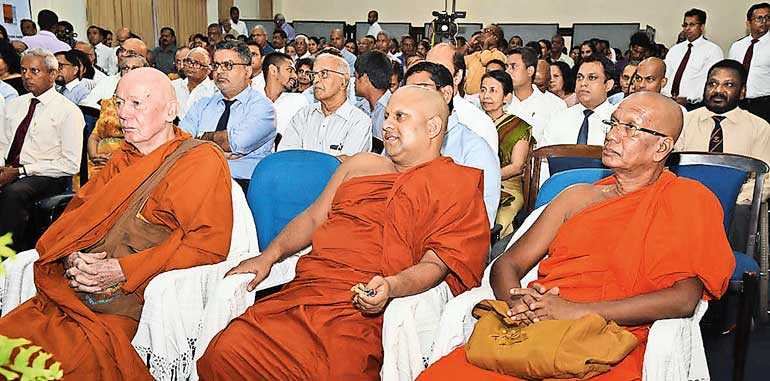
Intellectual, inter-religious, interactive engagement
Addressing the gathering PIM Director Professor Ajantha Dharmasiri identified this event as an “Intellectual, inter-religious, interactive engagement that will eventually contribute to the overall endeavour of PIM of mentoring future leaders of the nation. ‘Living Together’ is all about getting together, growing together and glowing together by a group of people of who sincerely worked hard as seekers.”
Speaking further he shared a story where a Muslim cleric was questioned about the killings in by Muslims who had responded by saying, “Muslims don’t kill, Buddhists don’t kill, Christians don’t kill, but killers kill,” and highlighted the danger of stereotyping followers of different faiths without looking at their deeper meanings.
Explaining further the significance of the Dialogue experience and Deepal’s book he drew parallels from the meaning of the Dance of Shiva which according to the Hindu iconography, symbolises the rhythm of the universe, and how Frijol Capra in his Tao of Physics compares this dance of Shiva to the movements of electrons in an atom using the knowledge of quantum physics, and brought in the writings of Mahagama Sekara who said in Prabuddha, “You are the mother who collected various reeds from the nearby thickets and backwoods colouring them in red and green weaving them to beautiful designs Taught me that this whole universes is just a pattern.” Commenting further he invited the audience to read, refresh reflect and be renewed human beings.
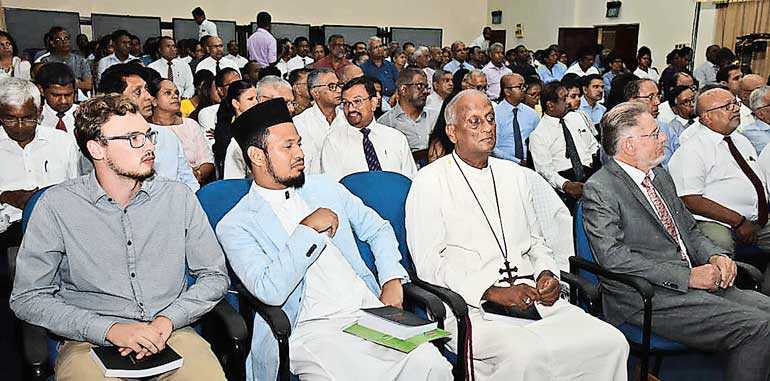
The Living Dialogue
Govindh Krishana Bharathan, who is a senior advocate of the Kerala High Court, spoke as a partner of the Living Dialogue from the beginning as well as a Hindu. He traced the history of the Dialogue how the founder Reinhard Von Kirchbach of Germany, who after a near death experience embarked on committing his entire life to the purpose of promoting this Inter religious Living Dialogue where the partners from different faiths had to practice their own religion in the presence of others on the premise ‘together yet unmixed’.
In the process he explained how the thinking of Teilhard de Chardin influenced the structure of the Dialogue who presented the concept of directional evolution. He drew extensively from the Hindu philosophy to elaborate how this simple experiment can and will influence the collective human thinking. He went on to say how during the Dialogue meetings the silence contributed to deeper understanding than the speaking.
He ended his speech by singing a Krishna Bhajan, providing the audience a serene and soothing spiritual experience.
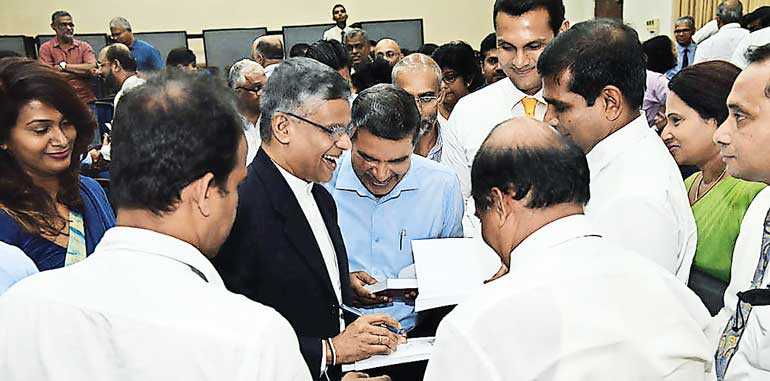
Interfaith activities
A retired Lutherian Priest Michael Moubious had come all the way from Germany to attend the launch. He too had been an early member of the Dialogue and has wide experience in interfaith activities in Germany.
“We live in interesting times. While it is stressed with destruction, it also is filled with creation. Human consciousness is taking its new shape and the Living Dialogue contributes to this process. Deepal, your book indeed is a significant component in this whole evolutionary phenomena. Thanks to your effort now this very unique experience is accessible to those who read English. I know you had been planning to publish this book for a long time. Books of most significant persons are published posthumously. We are glad you are not so significant! You invite the reader to join your journey and you write in a way that the readers can join your experience. Let me ask a few questions from the reader.
“Do you find your Buddhism in the way Deepal has described in the book through his experiences in the Dialogue or has he polished, tampered with it to be more palatable to the others in the Dialogue and the members of the other faiths, has Deepal been fair in reporting your view points? To those of you who know Deepal, do you recognise him as the same person you know that you find in the Dialogue? Has his behaviour evidenced change that can be traced back to the Dialogue? Has he been able to explain the complicated and complex process of the Dialogue? I admire him for his frankness for bringing up the issues and human limitations without pushing them under the carpet. Do you find the same?”
Moubious related how he became a better Christian because of the Dialogue process and how he is now has a greater appreciation to the other faiths. He even mentioned how he gets questioned by his own congregation as to why he still remains a Christian without being a Buddhist when he speaks so appreciative of Buddhism. He concluded by singing a Christian hymn in German, another fresh experience to the audience.
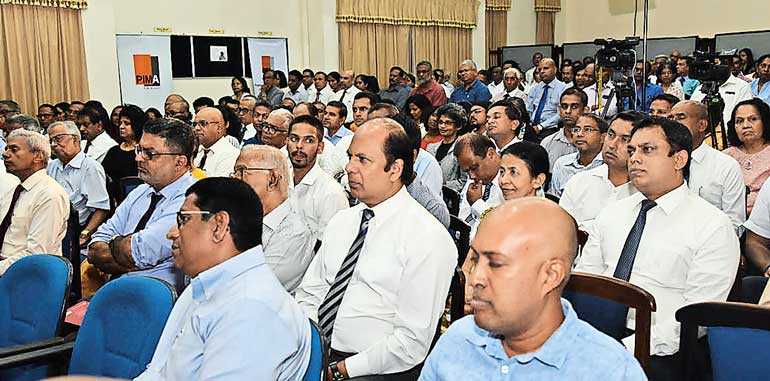
A relevant, timely and uncomfortable challenge
The famous Gregorian Chant Ubi Cari Tas as sung in Teize was played just before Rev. Duleep De Chikera took the opportunity to discuss the book under three broad themes eloquently.
“‘Living Together’ is a resource for all those of us who are interested in interreligious interaction. In time to come we will know whether this book will get a place in the vast library of books produced on the topic. Hence this is a celebration of a gift more than a launch of a book, certainly a gift to all Sri Lankans but even to interested persons across the globe.
“I have three themes. Firstly, this is extremely relevant book. The theme that runs from cover to coveris a story about a group of people who have cometogether time to time to understand each other’s religions and to do this in a spirit of respect ,sensitivity and dignity. As you read the book you find the rhythm of meeting or encounterand separation each feeding to the other. This is why I see the relevance of this book particularly to the people of this country. Except for a few districts where a mono culture prevails several of us encounter the religious other in our day to day life, whether it is the market place, school, hospital, work place, wedding or funeral in the bus on the train in our university, parliament etc the people of this nation has the constant opportunity to encounter and part withthe religious other. This book provokes the Sri Lankans of different faiths to use these encounters in the same spirit the members of the living Dialogue described in the book to deepen the mutual understanding.
“Some weeks ago my sister’s husband passed and theirs was a Christian and Buddhist marriage. There the Buddhist monk spoke a few words at the funeral and some of the Christian persons listened these words and developed an interest about what Buddhist say about the afterlife. This led to questions and further clarifications. What we need to do is to use our encounters with one another in small groups in families, neighbours, colleague and talk about each other’s beliefs and understand of life.when you meet at a wedding try to understand how different religions teach about marriage. Ask questions with respect receive explanations with respect, or for instance when the elections come ask what different religions have said about governance. We have a tendency to develop a courteous aloofness. So do not ask questions. But the book invites to do so.
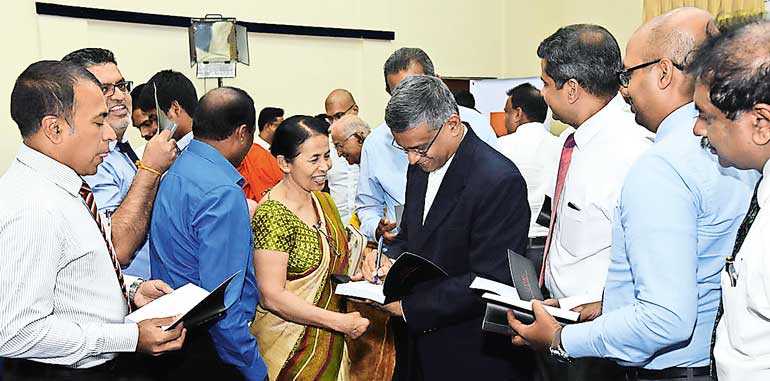
“The second strength of this book is that it is extremely timely. Living together among different religions is never an easy one. We had our tensions, we currently have some tensions and will continue to have them as well. Hostilities, aggressive agendas, they upset people and what has our response been so far, it has been worthy tolerance but even this strength of tolerance is running out. The book tells us another step, that is engagement. It shows how this coming together has made them stronger in their own faith because of the presence of the other person. So I become a better Christian because my Buddhist Hindu and Islamic neighbour. The presence of people of other faiths hence is a blessing.
“In Christianity we speak of loving the neighbour. But in Buddhism what is spoken is loving all beings. That includes the neighbour but goes beyond that. Through this conversation I went back to the Bible and found in Creation Theology that it has been there from the beginning that Jews and Christians had been told to care for the nature and ecological justice. If not for this encounter with Buddhism I would not have discovered this.
“We have all our lives lived either on a campus or down the street where we could hear the bells of the church that goes at six in the morning noon and six in the evening that is called angelus. When we hear them we are supposed to reflectin intercessory prayers for the people of the world. For one year we lived in Rajagiriya away from the hearing distance of the Church Bells. I missed the bells. But there was a gift for our house was in between two mosques. Those mosques would call people to pray five times a day. So I used that instead of the church bells and prayed five times a day and became an even better Christian.
“One of the greatest theologians, Paul Nitter, wrote these thoughts in a book that got him into trouble but the book was very popular among inter faith activists. The name of the book says it all. ‘Without the Buddha I may not be a Christian’.
“The third thrust of the book is that it brings us an uncomfortable challenge. While your group and many in the country and around the world appreciate the Dialogue but there are in the world who dislike, distrust interreligious dialogue. They think those are traitors ‘How can be a Christian and appreciate Buddhism?’ These are fundamentalists or extremists. In their view one has to convert to their view or they need to be eliminated. They want a world where there is only one type, that is my type. What do we do with such people?
“The spirit of this book says ‘engage’ with them, however difficult it is. Be patient, be respectful, and be strong as well. Try to persuade them that the best option living in inter religious societies like ours that we interact with each other and enrich our lives. I invite this book to be translated into Sinhala and Tamil for it needs to reach far corners of this country.”
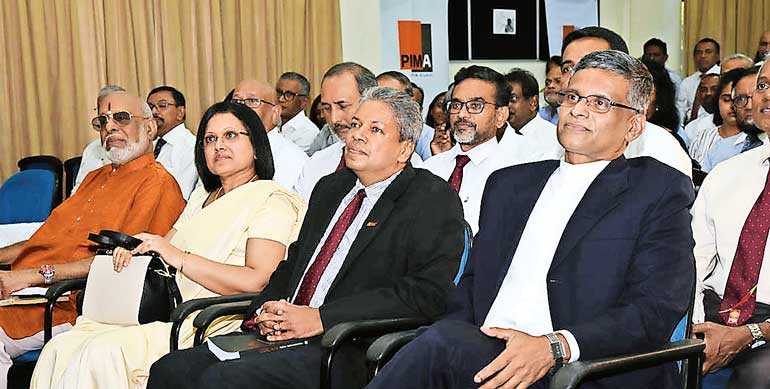
Messages of unity
In addition there was a video message from an Islamic partner of the Living Dialogue Halima Krausan, a German by descent who became a Muslim in her teens and is now a scholar on Islamic Theology who works extensively in promoting Muslim and Jewish understanding in Germany.
It was interesting to see how she had begun to appreciate the different aspects of other religions, how she took part in colourful Hindu religious life and how Buddhist loving kindness mediation helped her expand her world view. She laughed at herself by asking the question, “When I say ‘may all beings be well and happy,’ do I include mosquitos as well?” That was the sincerity with she approached that experience.
Bringing in the local flavour, Sheik Arkam Nooramith, a young Islamic scholar, spoke with much candour. This was preceded by a video clip where a Dialogue Partner Sheik Mahammud Rasheed from Pakistan singing an Islamic prayer in Urdu.
Having read the book cover to cover he appreciated the author for being staying true to the Buddhist point of view, and being respectful honestly to the other faiths in the book. He found that to be a very rare quality.
He used the opportunity to relate how he found that in a book written 200 years ago in Arabic in Afghanistan, the historic significance and the importance of the Bamiyan Buddha statues were well documented by an Islamic scholar. He used this to illustrate intolerance is far from the core Islamic teachings.
Referring to a tsunami time billboard which said ‘Build the Country and Build ourselves’ and proposed that what is needed is for us to improve first, so the line should be ‘Api hedemu, Rata hadamu’ and invited the audience to read, refresh reflect and renew to be that new person and asserted that living together is the only way – there is no other option.
Finally Deepal addressed before inviting all to indulge in a soothing loving kindness chant in Chinese. He connected a number of dots in his personal life that contributed to the ultimate publication of this book. The role his father played in formative years, and the elderly gentlemen who gave him books to read on Buddhism during his Advanced Level days at Ananda and a distant relative with whom he maintained relationships leading up to the meeting of Ven. Ananda in Gampola.
He stressed on the need for the type of discourse captured in the book if we are to evolve as a modern nation and the need to have greater understanding among different faiths to leverage the synergy that diversity brings for better nation. He further explained how the self identity which is built and sustained through ignorance according to Buddhism is the ultimate cause for division.